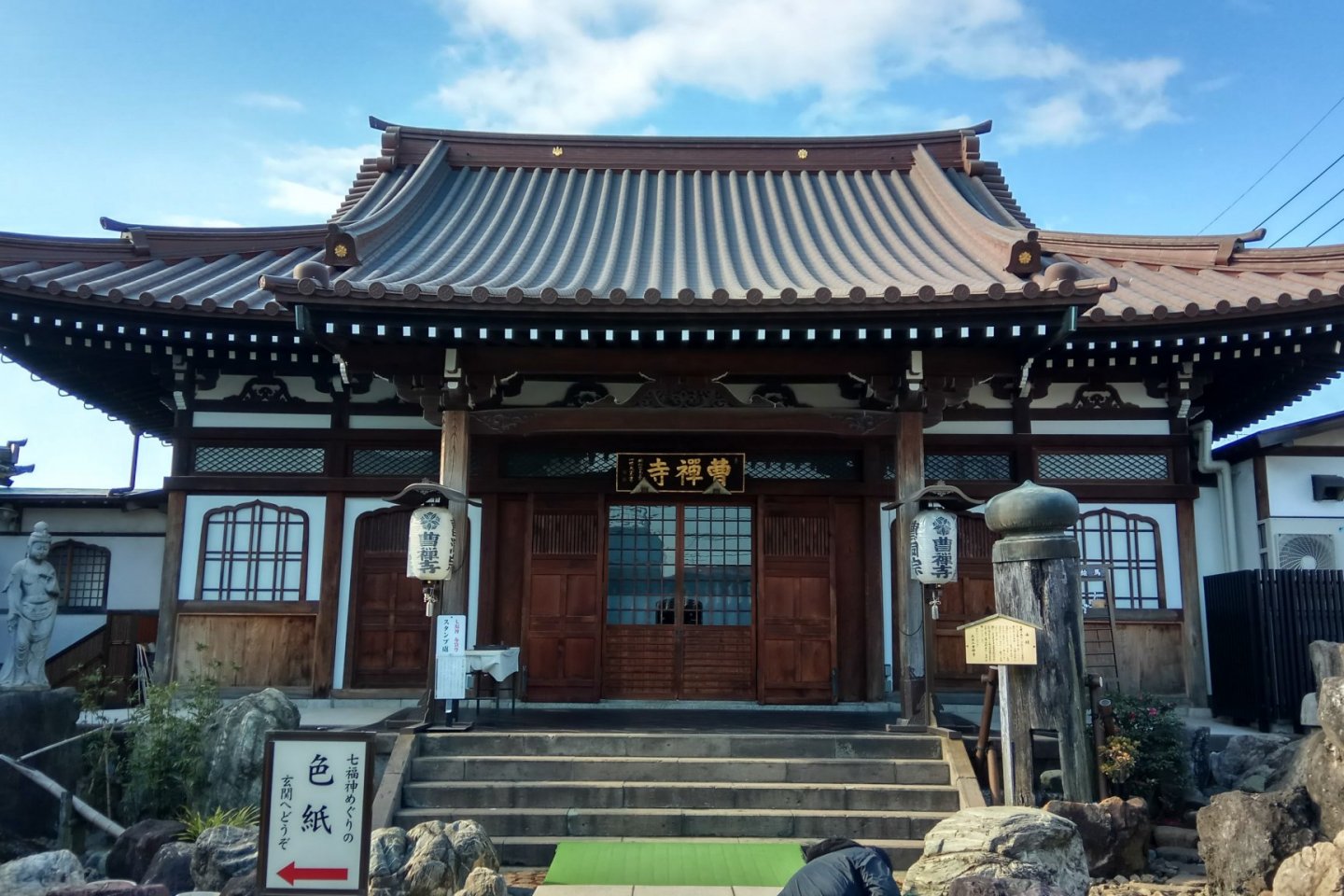Seven Lucky Gods in Japan are believed to bring fortune and happiness, and its origins date back to early 15th century. By the 19th century, the tradition has spread among the people and the standardized seven members became what we know of today. Countless regions in Japan developed pilgrimage routes for the Seven Lucky Gods and became increasingly popular in the late 20th century. This article will introduce you to the pilgrimage route for the Seven Lucky Gods in the Ikegami area in Ota City.
Here are the names and background of the Seven Lucky Gods:
- Ebisu (養源寺) – God of fishery, commerce. Origin: Japan
- Daikokuten (馬頭観音堂) – God of agriculture. Origin: India
- Benzaiten (厳正院) – Goddess of music, art. Only female of the seven. Origin: India
- Bishamonten (微妙庵) – God of treasure, fortune. Defender of the nation, warrior. Origin: India
- Hotei (曹禅寺) – God of happiness, fortune. Origin: China
- Fukurokuju (本成院) – God of wisdom, longevity, fertility. Origin: China
- Jurojin (妙見堂) – God of elderly, longevity. Origin: China
One of the rituals when you make a pilgrimage is collecting stamps at each temple on a shikishi (色紙), an autograph board with gold borders. The shikishi for this pilgrimage in Ikegami is sold only at two of the temples, which is why I started mine at one of them, Souzenji Temple, located a few blocks south of Ikegami Station. There are no shops or stands at any of the temples, so you would be better to ring the doorbell to purchase the shikishi. On the shikishi, you will see the names of the Seven Lucky Gods and the temples associated with them, so the goal is to visit each of the temples and stamp the illustrations of the Gods over the calligraphies.

From Souzenji Temple, I went clockwise and visited in the order of: Mimyo-an Temple, Batoukannon-dou Temple, Honjo-in Temple, Gonjo-in Temple, Myouken-dou Temple, and Yougenji Temple. The statues of the Seven Lucky Gods are enshrined in their associated temples. Some of the Gods are inside the main hall of the temple so you may need to ask the staff to be let in. The temple sites are not too big, thus it shouldn’t be too difficult to find the tables with the stamps. You can also pick up a paper card with the names of the Gods and the temples written in calligraphy, typically on the same table.
There are lots of temple and shrines in the Ikegami region. One way to make sure is they typically have a red flag just outside the gate that says “池上七福神” (Ikegami Shichifukujin). The entire itinerary was around two hours, including small detours and a short visit to the Ikegami Honmonji Temple. In spring, the Ikegami Baien, a plum garden located just a few minutes’ walk from the Gonjo-in Temple, can also be a pleasant addition to the itinerary with the plum blossoms in full bloom.





























